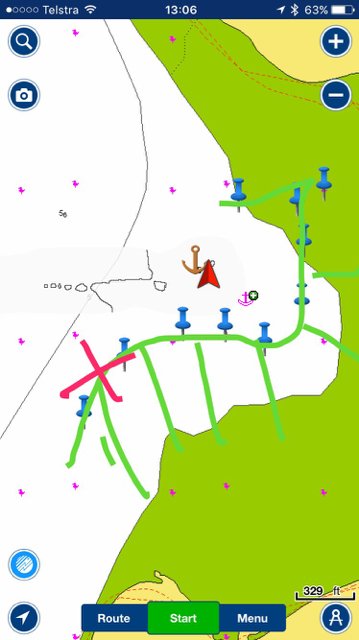Hickers
Senior Member
We watched two yachts in succession bump into the fringing reef in Macona yesterday evening though we did try to wave them off. The first one tried anchoring only to swing over the reef whilst the second sailed past them as they tried to extricate themselves and ran into the reef.
It was late in the day so hard to see against the setting sun and the navionics chart is very inaccurate.
The attached chart shows the maps reefline plus the actual I mapped out in the tinny. X marks where they both hit. No major damage seemed to be done but shows the challenge in anchoring late in the day in unfamiliar locations.

It was late in the day so hard to see against the setting sun and the navionics chart is very inaccurate.
The attached chart shows the maps reefline plus the actual I mapped out in the tinny. X marks where they both hit. No major damage seemed to be done but shows the challenge in anchoring late in the day in unfamiliar locations.

